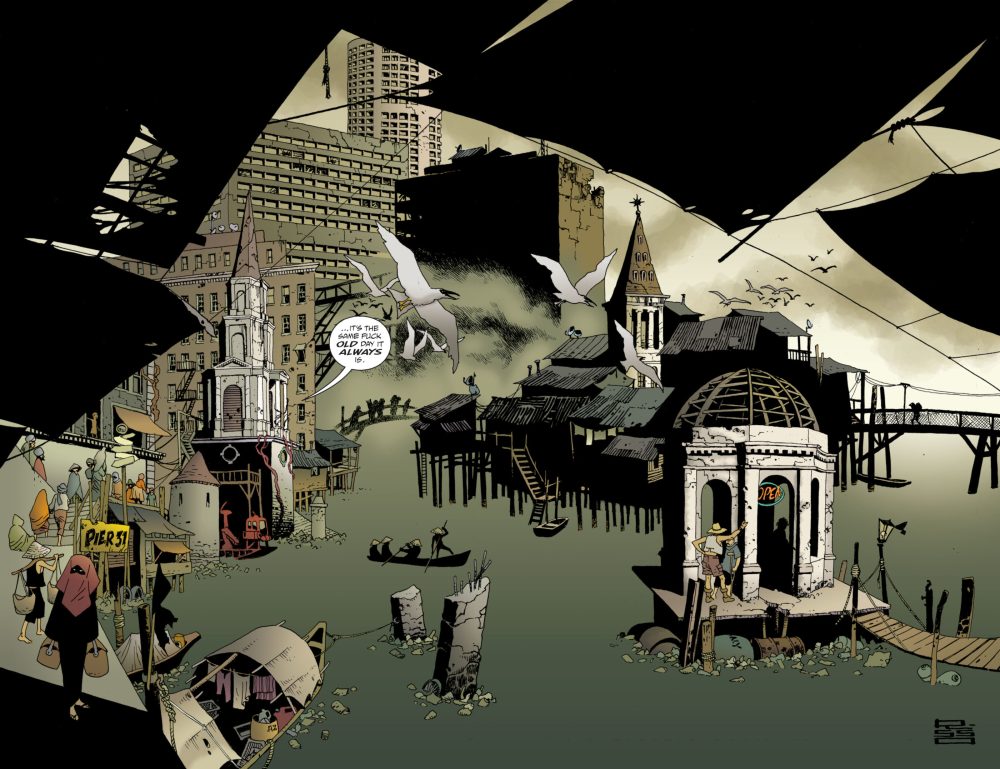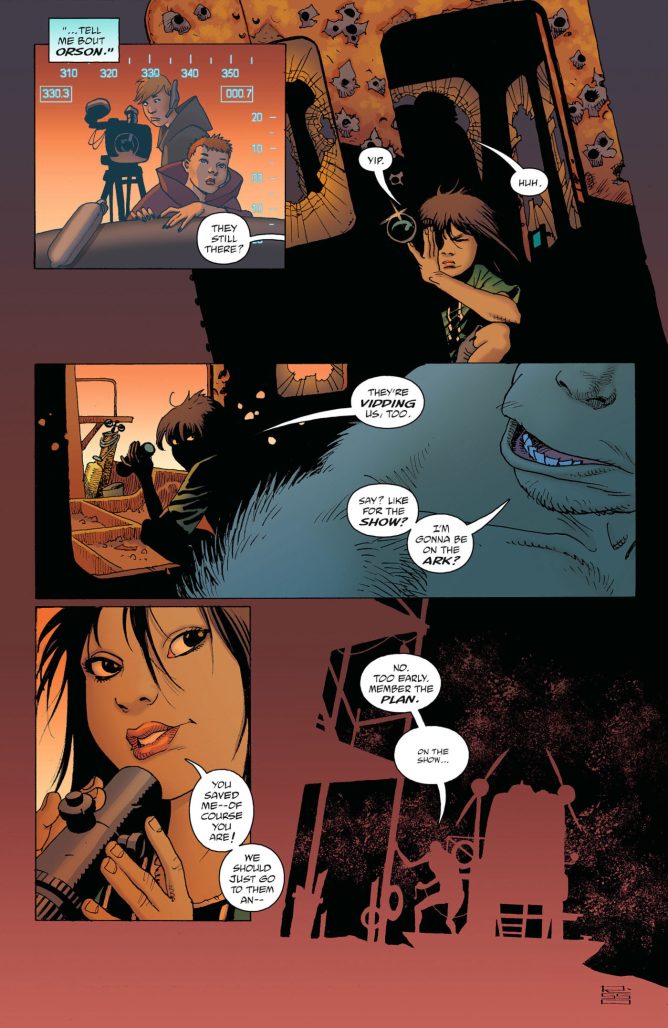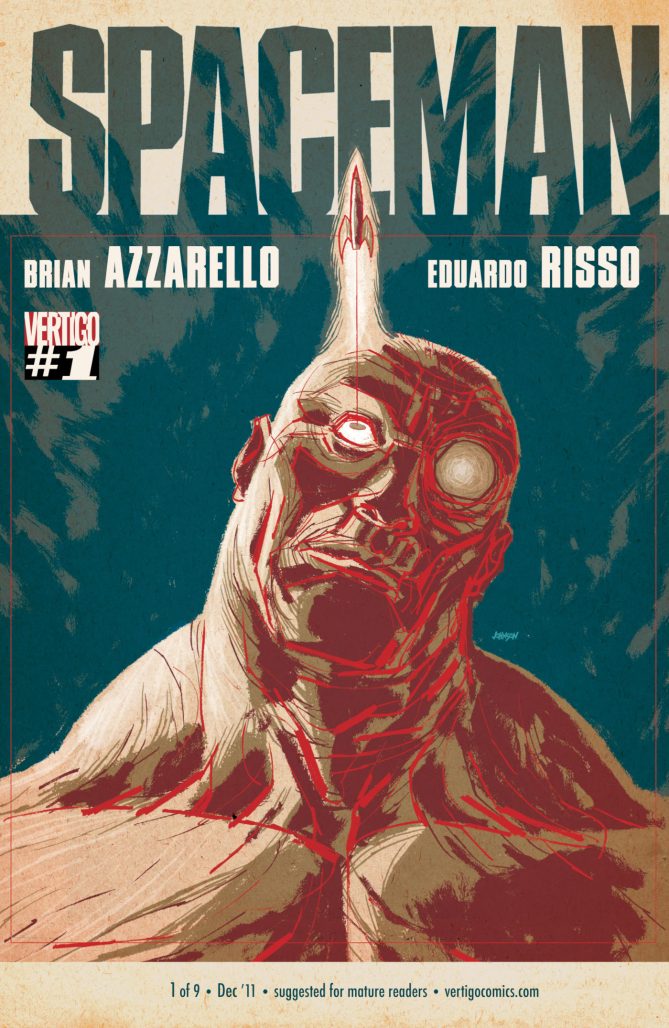Spaceman by Brian Azzarello, Eduardo Risso, Patricia Mulvihill, Giulia Bruscoand Clem Robins is perhaps the most underrated of Azzarello & Risso’s collaborations. It’s a different beast. But no less enthralling. A story of a reality television star getting kidnapped, then rescued by one of the few remaining genetically engineered Mars explorers. And a whole lot more complications.
“Ain’t no future. “My life didn’t come true.”
At its core, the story of Spaceman still has the framework of a gritty noir tale. The down-on-his-luck investigator, Orson, just happens to be an enhanced being. The dark alleys are really derelict buildings still rising above a dystopian landscape of raised water levels. The femme fatale is an online sex worker. And the MacGuffin is a child star. It’s really what you’d expect from Azzarello and Risso, but with a twist.
The approach to sociopolitical commentary in the series is also in some ways more apparent. The division between classes is more pronounced. The criticism on reality television is front and center, hinging much of the plot on reactions to it. The story embraces traditional science fiction methods for touching on modern problems. And a very interesting use of language.
The dialogue is definitely one of the things that makes Spaceman stand out. Azzarello develops a speech pattern for the people outside the rich areas that turns some nouns into verbs, simplifies a few words, changes tenses and such. It’s actually similar to what Alan Moore does later in Crossed + 100 and really rather neat. Especially since it’s a dialect and not representative of intellectual capacity of the spaceman.
“Was or fenced. Big big time. “Said it morly committed the mission.”
This also might be my favorite of all of Eduardo Risso’s work. The world-building in his art here is impeccable, presenting not just a ruined world, but a new type of person in the spacemen, reminiscent of some of our Simian brethren and Neanderthals. Risso nicely blends this sci-fi world with the inky shadows of his usual style. And a different approach to shading in the flashbacks, using a rougher hatching and cross-hatching to set it apart. To me, the flashbacks feel a bit more fragile through this, perhaps indicating a fallibility of memory.
Gorgeous color work from Patricia Mulvihill (with Giulia Brusco on the first chapter). Like the shift in Risso’s style for the flashbacks, we see a similar one in the color palettes across the two. A dark noir feel to the contemporary period and a dustier yellow and red for Mars. Although there are some interesting stylistic shifts towards the end. All coupled with the usual impeccable lettering from Clem Robins.
““He be a spaceman that made something of himself.”
I quite like when creators who typically do a specific kind of story do a spin on it. When they approach it from a different angle. Or drop specific genre tropes into a different genre entirely. Like what Azzarello, Risso, Mulvihill, Brusco, and Robins do with the sci-fi noir of Spaceman.
Classic Comic Compendium: SPACEMAN by Azzarello & Risso
Spaceman
Writer: Brian Azzarello
Artist: Eduardo Risso
Colourists: Patricia Mulvihill & Giulia Brusco
Letterer: Clem Robins
Publisher: DC Comics – Vertigo
Release Date: May 25 2011 (strange Adventures) | October 26 2011 – August 29 2012 (original issues)
Collected in Spaceman: The Deluxe Edition
Read past entries in the Classic Comic Compendium!





